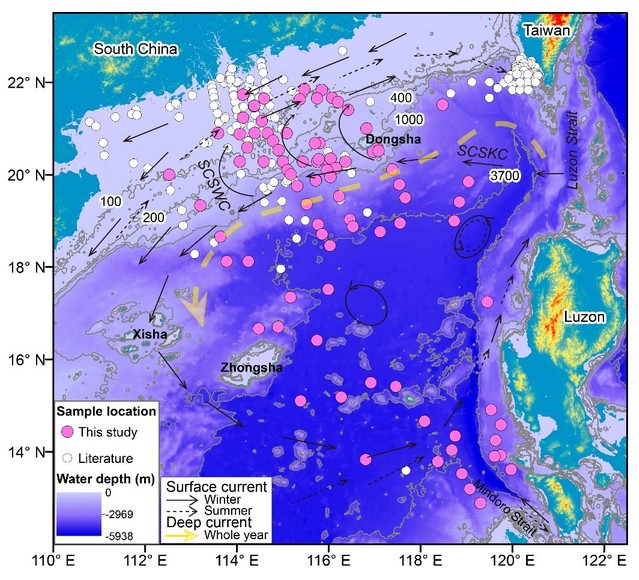Baozhi Lin1, Zhifei Liu1, Timothy I. Eglinton2, MartinG. Wiesner3,4, Thomas M. Blattmann2, and Negar Haghipou2,5
1State Key Laboratory of Marine Geology,Tongji University, Shanghai, China,
2Geological Institute, ETHZürich, Zürich, Switzerland,
3Institute of Geology, University of Hamburg, Hamburg, Germany,
4Key Laboratory of Marine Ecosystem Dynamics, Second Institute of Oceanography, Ministry of Natural Resources, Hangzhou, China,
5Laboratory of Ion Beam Physics, ETH Zürich, Zürich, Switzerland
Abstract:
The burial of organic carbon (OC) in marine sediments regulates CO2 content in the atmosphere. However, the OC sources and their effect on the OC preservation in sediments of the continental marginal sea remain elusive. Here, we survey the abundance, stable carbon and radiocarbon isotopes of OC, as well as mineral surface area and grain size in surface sediments from the shelf to the abyssal plain of the South China Sea. We found that the marine OC comprises the 63 ± 9% and 78 ± 14% of sedimentary OC off South China and Luzon, respectively. The petrogenic OC contributing to sedimentary OC in these sites is generally higher than that of soil OC (22 ± 10% vs. 12 ± 6%). The sedimentary OC off Taiwan is predominantly derived from petrogenic OC, accounting for 57 ± 10%, with remaining consisting of marine OC (36 ± 10%) and soil OC (6 ± 1%). High soil OC contents are found in fine sediments on the inner shelf off South China, and high petrogenic OC contents occur in fine sediments off Taiwan. Marine OC contents are high in fine sediments on the middle shelf and upper slope off South China, but low in coarse sediments on the outer shelf and upper slope, and fine sediments on the lower slope and abyssal plain. The OC sources, mineral surface area, and oxygen exposure time of OC together control the preservation of OC in sediments with their relative importance differing on varying depositional settings of this sea.
Full Article:https://doi.org/10.1029/2023JG007909



